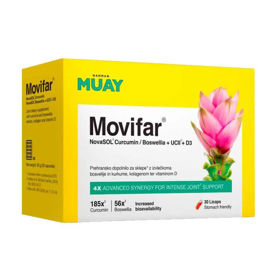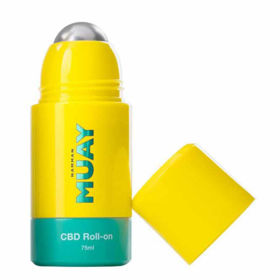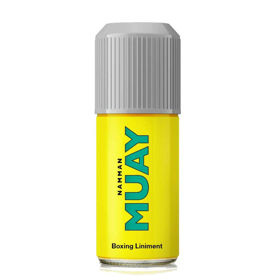Customer question:
What health problems could a burning pain in the lower back indicate? Anonymous customer's question
Pharmacist's answer:
Burning pain in the lower back can be a sign of various health problems, ranging from muscle and skeletal problems to nerve and internal diseases. Understanding the possible causes of this type of pain is critical to correct diagnosis and treatment.
One of the most common causes of low back pain is muscle strain. This can happen due to the sudden lifting of heavy objects, excessive physical exertion, or improper posture. Muscle spasms can cause a burning sensation, especially if the muscles in the lower back are involved.
A herniated disc occurs when the gel-like substance inside the intervertebral disc shifts and presses on the nerve roots. This can cause a burning pain radiating from the lower back and the leg (sciatica). In addition to pain, numbness, and tingling may also occur.
Sciatica is a condition in which the sciatic nerve, which runs from the lower spine to the feet, is compressed or irritated. This can cause a burning pain that spreads from the lower back down one or both legs. A herniated disc is a common cause of sciatica.
Spinal stenosis is a spinal canal narrowing that can press on nerves and cause pain. Burning pain in the lower back can result from this pressure, especially in older people. The pain is often worse when walking or standing and better when sitting.
Spondylolisthesis is a condition in which one vertebrae slips forward over the lower vertebrae. This can compress the nerve roots and cause burning pain in the lower back and legs.
Osteoarthritis or rheumatoid arthritis in the spine can cause joint and surrounding tissue inflammation. This can cause a burning pain in the lower back, especially in the morning or after periods of inactivity.
Sacroiliitis is an inflammation of the sacroiliac joints that connect the lower part of the spine with the pelvis. This condition can cause burning pain in the lower back and buttocks, which may radiate down the legs.
Peripheral neuropathy, damage to the peripheral nerves, can cause burning pain in various body parts, including the lower back. Diabetes is one of the most common causes of peripheral neuropathy.
Burning pain in the lower back can sometimes indicate problems with internal organs, such as the kidneys (e.g., kidney stones or urinary tract infections) or the pancreas (e.g., pancreatitis). These pains are usually accompanied by other symptoms, such as abdominal pain, nausea, or difficulty urinating.
Fibromyalgia is a chronic condition that causes widespread pain throughout the body, including the lower back. Burning pain, fatigue, sleep disturbances, and pressure sensitivity may be present.
How do you reduce burning pain in the lower back?
Burning pain in the lower back can be reduced in several ways, depending on the cause of the pain. A combination of rest, ice, and heat therapy is often effective for acute pain resulting from a muscle strain or minor injury. Rest allows the muscles to recover, and ice helps reduce inflammation and pain, especially in the first 48 hours after an injury. Heat helps relieve muscle tension and improve circulation, which can speed healing.
Exercises to stretch and strengthen the back muscles are vital in reducing low back pain in the long term. Regularly performing exercises that strengthen the core and back muscles helps improve spinal stability and prevent re-injury. Yoga and pilates are great forms of exercise for strengthening and stretching muscles and improving posture.
Pain relievers and anti-inflammatory medications can be effective for chronic pain or pain resulting from conditions such as a herniated disc, sciatica, or arthritis. Nonsteroidal anti-inflammatory drugs (NSAIDs), such as ibuprofen or naproxen, can help reduce inflammation and relieve pain. In some cases, the doctor prescribes more potent drugs or muscle relaxants.
Physiotherapy is often recommended for managing chronic low back pain. A physiotherapist can show you specific exercises adapted to your condition and help you improve mobility, strength, and posture. In addition, physiotherapy may include ultrasound therapy, electrostimulation of muscles, or manual therapy.
Using ergonomic aids can significantly help reduce low back pain. A properly adjusted chair, desk, and computer screen can help improve posture and reduce strain on the spine. It is also essential to avoid prolonged sitting or standing still. Taking regular breaks to move and stretch can prevent stiffness and reduce pain.
Additional modalities such as acupuncture, massage, and chiropractic effectively relieve low back pain for many people. Acupuncture involves inserting fine needles into specific points on the body to reduce pain and improve energy flow. Massage can help relax tight muscles and improve circulation, while chiropractic care involves spine adjustments to improve alignment.
Stress management is critical, as stress can increase muscle tension and worsen lower back pain. Relaxation techniques such as meditation, deep breathing, and progressive muscle relaxation can help reduce stress and, thus, pain.
In some cases, more invasive treatment is required, such as corticosteroid injections or surgery. These options are usually used when other treatments are ineffective or when the pain is due to a more severe condition that requires immediate intervention.
It is essential to consult a doctor or specialist to determine the exact cause of the burning pain in the lower back and receive appropriate treatment. You can manage and reduce pain only with a proper diagnosis and a customized treatment plan.
Interesting reading: Burning pain behind the knee
Interesting reading: Siva arena signs












 Facebook
Facebook
 Instagram
Instagram
 info@moja-lekarna.com
info@moja-lekarna.com

